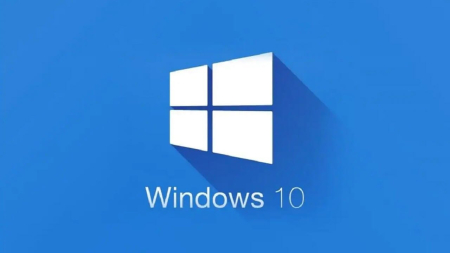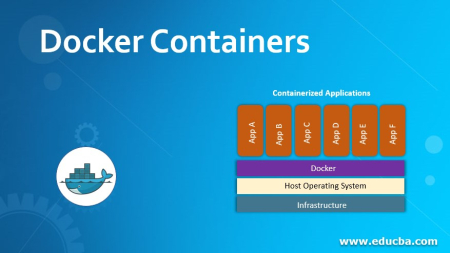JIRA Project Management: Enhancing Team Collaboration
-
07/05/2023
-
1009
-
0
JIRA project management is a powerful tool that helps teams streamline their workflows and collaborate more efficiently, resulting in better productivity and project outcomes.
Related posts
Maximizing Exposure: Top Strategies to promote iOS App
The Essential Guide to App Store Optimization for iOS
1. Introduction to JIRA Project Management
JIRA is a project management tool that has been widely adopted by many organizations to help manage and track projects. It provides a user-friendly interface for project managers, team members, and stakeholders to collaborate and streamline workflows. JIRA's flexibility and versatility have made it a popular choice for various types of projects, from software development to marketing campaigns.
One of the main advantages of JIRA is its ability to break down complex projects into smaller, manageable tasks. This enables teams to focus on specific tasks and collaborate more effectively. Additionally, JIRA provides a range of customizable workflows and templates that can be tailored to suit the needs of different projects and teams.
JIRA also provides extensive reporting and tracking capabilities, which allows project managers to monitor progress and identify potential bottlenecks or issues in real time. This helps to keep the project on track and ensure that all team members are working towards the same goals and objectives.
Overall, JIRA is an essential project management tool for organizations looking to improve team collaboration, streamline workflows, and increase productivity. Its intuitive interface, customizable workflows, and powerful reporting capabilities make it a versatile solution for a wide range of projects and industries.
2. Creating and Managing Projects in JIRA
Creating and managing projects is an essential aspect of JIRA project management. Here are some key points to consider:
Defining project scope: Before creating a project in JIRA, it's important to define the project's scope and objectives. This includes identifying project goals, stakeholders, and requirements.
Creating a project: Once the project's scope is defined, the next step is to create a project in JIRA. This involves creating a project name, assigning a project lead, and selecting a project template.

Creating and Managing Projects in JIRA, Source: Asoservice.com
Configuring project settings: JIRA offers a range of project settings that can be configured to suit specific project requirements. This includes project permissions, workflows, issue types, fields, and screens.
Managing issues: JIRA's issue-tracking system enables project managers to manage and track issues throughout the project's lifecycle. This includes creating issues, assigning them to team members, tracking their progress, and resolving them.
Overall, effective project management in JIRA involves a combination of defining project scope, creating and configuring projects, adding team members, and managing issues. By leveraging JIRA's powerful project management capabilities, organizations can streamline workflows and enhance team collaboration, ultimately leading to more successful project outcomes.
3. Configuring Workflows in JIRA Project Management
Configuring workflows is an important aspect of JIRA project management as it allows teams to define and automate the steps involved in their project's lifecycle. Here are some key points to consider when configuring workflows in JIRA:
Workflow Design: Start by designing a workflow that aligns with your project's requirements. You can use the default JIRA workflow or create a custom workflow that fits your team's unique needs.
Workflow Steps: Identify the steps involved in your project's lifecycle, such as creating issues, assigning tasks, testing, and deploying. Each step should be clearly defined and mapped to an appropriate workflow status.
Statuses and Transitions: Set up statuses and transitions for each step in your workflow. Statuses represent the current state of an issue, while transitions allow users to move an issue from one status to another.
Conditions and Validators: Conditions and validators can be added to transitions to ensure that an issue meets certain criteria before it can move to the next status. For example, you can require that an issue is assigned to a specific user before it can be moved to the "In Progress" status.
Testing and Iteration: Test your workflow to ensure that it aligns with your team's requirements. Iterate as necessary to refine your workflow and improve its efficiency.
By carefully configuring workflows in JIRA, teams can automate their project's lifecycle and streamline their work processes. This can help to improve productivity and collaboration among team members, leading to more efficient and successful project outcomes.
4. Enhancing Collaboration with JIRA
JIRA is a powerful project management tool that helps teams collaborate more efficiently. Here are some ways JIRA enhances collaboration:
Customizable Dashboards: JIRA allows users to create personalized dashboards that display relevant information and metrics, making it easier for team members to stay on top of project progress.
Commenting and Notifications: JIRA allows team members to add comments and receive notifications, helping to keep everyone up-to-date on project developments.
Agile Boards: JIRA's agile boards, such as Scrum and Kanban boards, provide real-time visibility into project progress, making it easier to identify and resolve issues as they arise
Integration with Other Tools: JIRA integrates with a wide range of other tools; such as Slack, Confluence, and Bitbucket, making it easier for teams to share information and collaborate effectively.
By enhancing collaboration, JIRA helps teams to work more efficiently and effectively, leading to better outcomes and a more satisfied team.
5. Integrating JIRA with Other Tools and Platforms
Integrating JIRA with other tools and platforms can help to enhance its functionality and make it more efficient for project management. Here are some of the key integrations that can be useful:
Integration with development tools: JIRA can be integrated with popular development tools such as GitHub, Bitbucket, and GitLab. This allows for seamless tracking of code changes, pull requests, and issues, as well as automatic updates to JIRA issues when code changes are made.
Integration with communication tools: JIRA can be integrated with communication tools such as Slack, Microsoft Teams; and HipChat. This allows team members to receive notifications and updates directly in their preferred communication channels, making it easier to stay informed and collaborate effectively.
Integration with testing tools: JIRA can be integrated with testing tools such as Selenium, TestRail, and Zephyr. This allows for the automatic creation of test cases and tracking of test results, as well as easy identification of issues that arise during testing.
Integration with project management tools: JIRA can be integrated with project management tools such as Asana and Trello. This allows for easier tracking of project progress across multiple tools, as well as seamless transfer of data between different platforms.
Overall, integrating JIRA with other tools and platforms can help to enhance collaboration; improve efficiency, and streamline project management processes. Develop countermeasures to address the identified threats and risks and increase your app downloads.
6. Best Practices for JIRA Project Management
JIRA project management offers a wide range of features and customization options, making it a powerful tool for managing projects and enhancing team collaboration. To make the most out of JIRA, it's important to follow best practices for its use. Here are some tips:
Define clear project objectives: Before setting up a project in JIRA, ensure that you have clearly defined project objectives and goals. This will help you determine the right project type, issue types, workflows, and custom fields.
Use Agile methodologies: JIRA supports Agile methodologies such as Scrum and Kanban, which are effective for managing complex projects. Ensure that you understand the fundamentals of these methodologies and tailor your JIRA workflows accordingly.
Create detailed project plans: JIRA provides several features to help you create and manage project plans, such as Gantt charts, roadmaps, and versions. Use these tools to create detailed project plans that are visible to all stakeholders.
Customization: Take advantage of JIRA's customization options to tailor it to your organization's specific needs. Custom fields, workflows, and permissions can all be customized to meet your requirements.
Use automation: JIRA provides several automation features, such as triggers, conditions, and actions. Use these features to automate repetitive tasks and streamline your workflows.
By following these best practices; you can effectively manage your projects and enhance collaboration using JIRA project management. If you want to know more about it, you can find it by reading how to increase macOs app reviews.
Conclusion
In conclusion, JIRA project management is a powerful tool for streamlining workflows and enhancing team collaboration; and following best practices can maximize its benefits.
Related posts
https://asoservice.com/increase-app-installs-from-google-ads
https://asoservice.com/ios-android-app-reviews-ratings
Thanks so much for reading this article.
Source: https://asoservice.com/




































Leave a Reply
Your e-mail address will not be published. Required fields are marked *